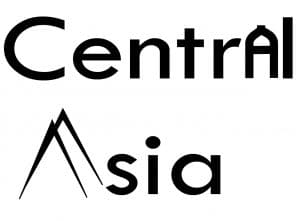Kokand
Kokand
Kokand is located in Eastern Uzbekistan at the southwestern edge of the Fergana Valley, about 230 km southeast of Tashkent and close to the border with Tajikistan and is perhaps the most attractive city for a tourist in the Uzbek Fergana Valley. Kokand is the valley’s first important town on the road from Tashkent being a gateway to the region and a stopping spot for many pilgrims. Kokand is one of the most popular cities in Uzbekistan, once the capital of the powerful Kokand Khanate that dominated the whole Fergana and other even larger regions during its hey day.
A traveler on his way to Ferghana from other parts of Uzbekistan, first arrives in Kokand as the Soviet past has cut the most natural way to the mouth of Fergana valley which is part of Tajikistan. Kokand has preserved much of its wealthy history, from the large and magnificent palace of Khudyar Khan to the Juma Mosque and a large collection of madrassas and other old structures that with a bit of imagination will bring the visitor back at least couple of hundreds of years.
Kokand is included in many of our Uzbekistan Tours and Central Asia Tours. Most tourists spend only a day in Kokand but if you have the time, it offers a lot of small secrets to be discovered.
History of Kokand
According to the numerous pilgrims’ descriptions notes, the city of Kokand has been populated at least since the 10th century when the town was known as Khavakend and located on a caravan route between India and China but it was not a major player in the region that time. Kokand village was only fortified by the Shaybanid ruler Shahrukh in the early 18th century. As the influence of his khanate grew, so did the scale of the city.
Defined as the ‘town of the boar’ or the more mysterious ‘city of winds, Kokand lent its name to the powerful 18th-19th century khanate stretching from the Ferghana Valley to Tashkent and all the way to the Southern Kazakh steppes.
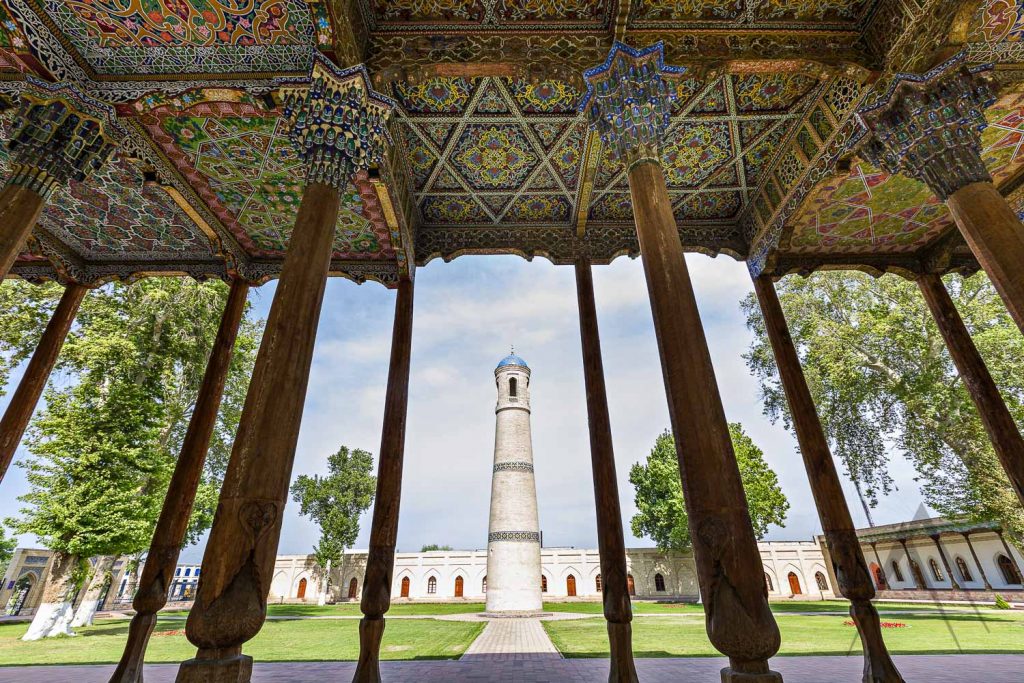
Though young compared to other Ferghana valley cities, Kokand quickly bloomed into a flourishing trading and religious center, competing of the spoils of Central Asia with the khanates of Bukhara and Khiva. During its peak, Kokand Khanate and its capital were Central Asia’s leading powers and a religious center of Central Asia, with its at least 35 madrasas and hundreds of mosques. It also became a wealthy supporter of popular poets, writers, scholars, art and culture. The power of Kokand faded when the Russian empire finally reached Fergana valley in the end of 19th century.
Kokand Sights
Kokand old town center is fairly compact and it is best seen by walking. Most of the sights are located along two main roads or a little walk away in the narrow winding allies of the old town which are also an experience. Between the sightseeing one can always sit down to a restaurant, catch some local delicacies and plan for the next sights to see.
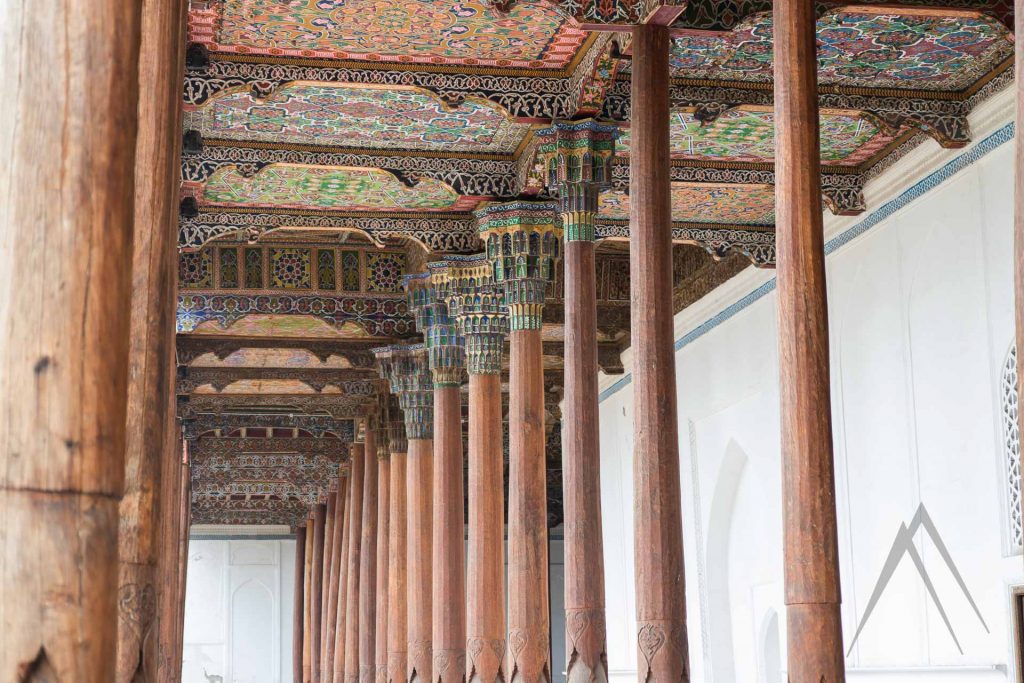

TThe majority of restaurants and shops are just next in a 1 km extent of Istiklol street, running east-west between Muqimi Park and Abdulla Nabiev maydoni square. The mosque-sprinkled old town alleys squeezed between Khamza, Akbar Islamov and Furqat streets constrain for good wandering and it is easy to lose one’s bearings while walking.
Khudayar Khan Palace
Khudyar Khan Palace is Kokand’s most remarkable sight and one of the most glittering royal residences in central Asia’s history. This majestic and notable building serves as a reminder of the last ruler of the Kokand Khanate and is located in the central park called Muqimi. Originally it had as much as 119 rooms and almost half of them were dedicated to the harems of the Khan. Khudayar Khan palace deserves its own page.
Dahman-Shakhon Complex
Dahman-Shakhon (sometimes Dahkha i Shokhon) complex contains the Narbutabey Mosque, Mir Medressa, Modari-Khan mausoleum and Dakhma-i-Shakhon tomb. It is situated in the old part of Kokand. The Dahman Shakhon complex is located next to a large cemetery straight east from the Khudayar palace, further east from Furqat street making it the perfect sight to find by walking through the old town alleys.
Stone Tablet of Nodira
Nodira was the famed poet, wife of Omar Khan’s widow. She was originally buried in the Modari-Khan mausoleum until she was adopted in the mid-20th century by the Soviets as a model Uzbek woman and moved to this prominent place under a white stone tablet, behind Dakhma-i-Shakhon.
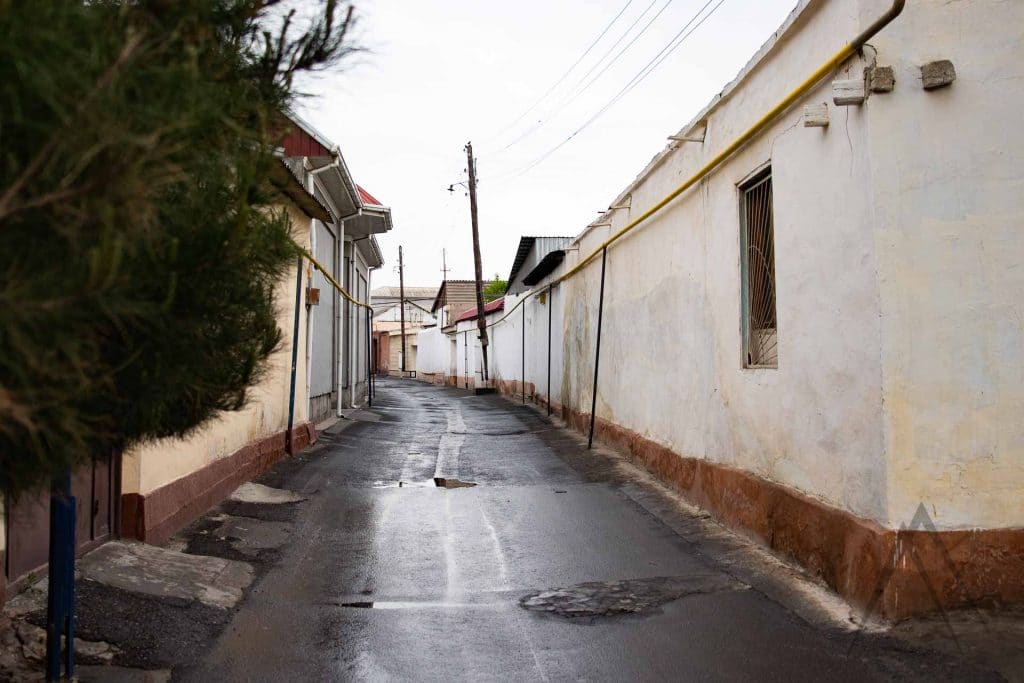
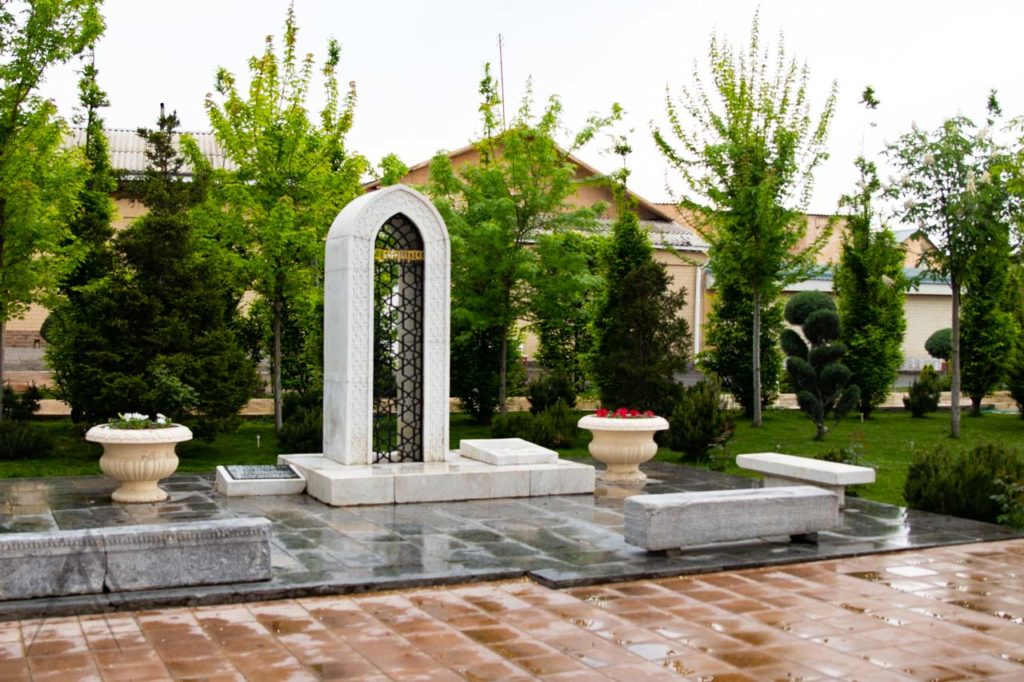
Narbutabey Mosque
The Narbutabey mosque was built in 1799 in the western part of the central graveyard on Chorsu square of Kokand. Norbutabey was a religious person and during his reign, 120 mosques were built in Kokand. Being one of the last mosques, today it’s the biggest and most central in Kokand city.
The area of the mosque and accompanying madrassa is 52m x 72m. After the independence of Uzbekistan, the madrassa opened again as a mosque with 85 students, the number of which has grown to 100 today.

Dakhma-i-Shakhon Tomb
Dakhma-i-Shakhon is a tomb of the Kokand rulers, which sits in the graveyard. It was built during Umar’s reign for the Khans and their family members and is surrounded by a fence. There is also a place for prayer – Ziarathona, where Umar is buried.
The entrance doors are carved with an original Arabic inscription from the Quran and some of Umar-Khan’s poetry. The monument was restored in 1971 by local artisans.

Modari Khan Mausoleum
Modari-Khan is in the central graveyard. It was built in 1825 for Umar-Khan’s mother, on the orders of his wife, Nodira-Begim. Its area is 7.5 x 8.5m and it is one of the most interesting examples of Muslim architecture.

Kokand Juma Mosque and Minaret
Perhaps the Kokand’s most fascinating architectural structure is the Juma mosque (Friday mosque). The most striking feature of the mosque are the long rows of wooden pillars supporting the colorfully decorated roofs. The mosque is established south of Mukimi Park along Turkestan (ex-Lenin) Street, where the road forks beside the Ghuldasta teahouse to cross the Kokand canal bridge that once divided old and new Kokand.

The mosque is centered around a 22 m tall minaret and includes a colorful 100 m long aivan (portico) supported by 98 red-wood columns brought from India and decorated in the diverse color and carving of traditional Ferghana architecture.
Built by Omar Khan between 1809 and 1812 as a magnified version of the rural Ferghana design, it was shut in Soviet times and reopened after restoration in 1989.
The entire Kokand Friday mosque complex has returned to its former Soviet guise as a museum, with one room housing a collection of suzani and ceramics from the region.
Next to the mosque sits the Amin Beg Madrassah, built for one of Madali’s sons in 1830, although often named after Khornol Khozi, the 1913 restorer responsible for the ornamental facade of colored tiles. The madrassah reopened after Uzbekistan’s independence, only to be closed again and reopen as a museum/shop.
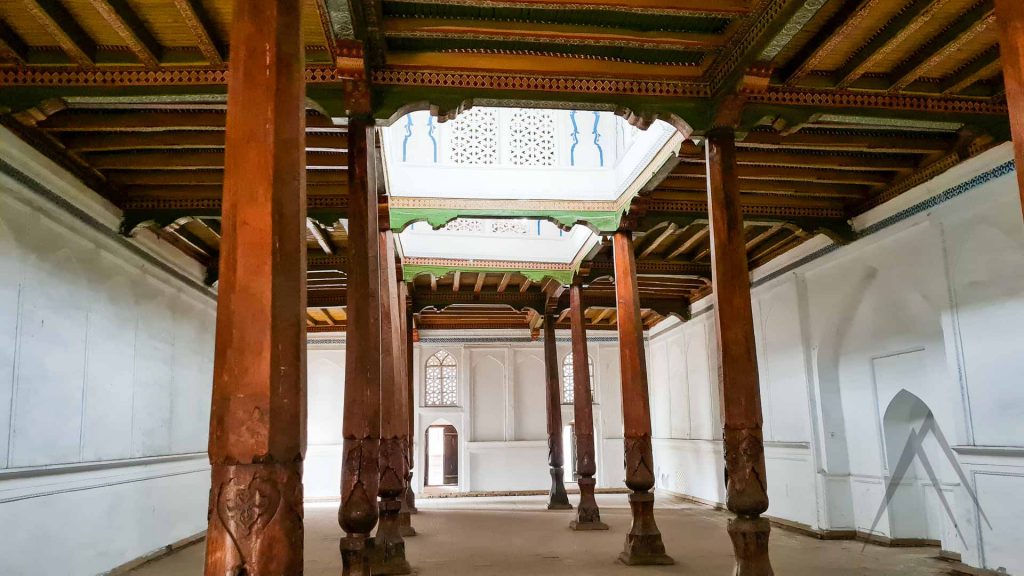
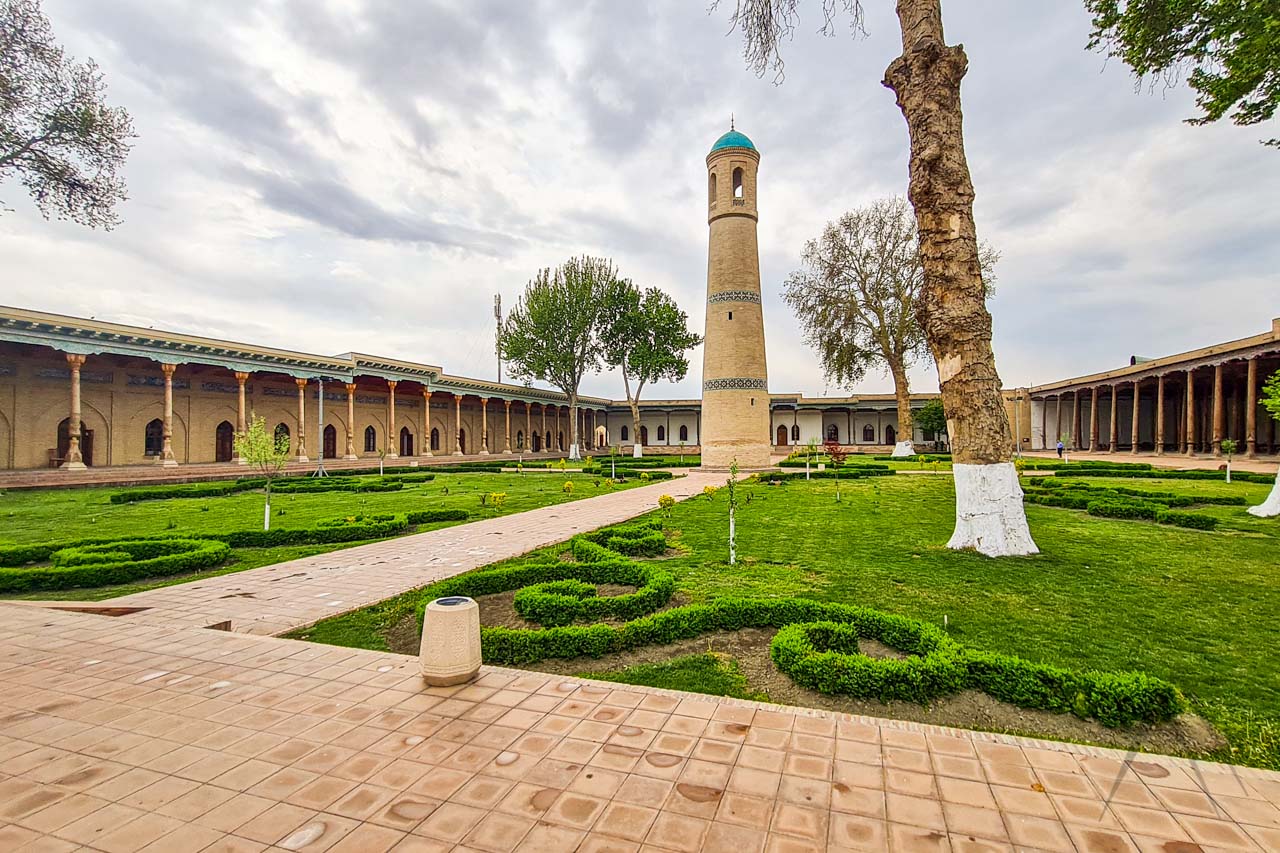
Kokand Zinbardor Mosque
Zinbardor mosque is a good example of the hidden mosques around the old town of Kokand. There are dozens of others also to be found just by wandering around the streets. Zinbardor mosque does not look like much from the outside but houses some original wooden parts from the 18th century.


Khamza House Museum
Khamza house museum was opened in 1989 on the 100th anniversary of Khakim Khakimzade Niyazi’s birth. This museum presents the life story of Kokand’s first Soviet hero, the first national poet of Uzbekistan and the founder of Uzbek Soviet literature Khakim Khakimzade Niyazi. The museum is a three-story structure located at 2 Akbar Islam St, north of Khamza’s statue in Furkat Park and the striking Khamza Musical Comedy and Drama Theatre.
Born in the doctor’s family, Khamza attended an Uzbek school and madrassah before a mixed Russian school expanded his horizons. Early works in the Uzbek classical style dealt with the social themes of a Turkestan slowly waking to progressive ideas. He opened schools in a lifelong push for public enlightenment and soon became an active Bolshevik propagandist. Throwing himself into theatre, he organized a drama company in Ferghana in 1918, performing plays like “The Bey (landlord) and the Farmhand” in which, against a backdrop of social injustice meeting bold revolution, the Uzbek character Gafur welcomes his Russian comrades with good proletarian internationalism.
For the next decade, Khamza was a young republic, teaching and composing. He was an enthusiastic fighter for a new life and unappeasable enemy of obscurantism”. A new play called “The Mysteries of the Paranja” which exposed female freedom touched the sensitive topics after which Khamza’s torture and assassination in 1929.
Khojibek Madrasah


Medrese Sokhibzoda Khazrat
This madrasah was built by the major religious and public figure Sohibzade Hazrat (1827-1860) who was a significant religious and public figure. Hazrat moved to Kokand from Peshawar (Pakistan) in 1825 by the invitation of the Kokand Khan. Later in this madrassah housed poets like Muhammad Aminhuja Mukimi and Muhyu Hukandi.

The madrassah structure consists of three courtyards including 24 rooms and tiny minaret. Two of the yards are in the straight line from the west to east and the third courtyard is linked to these yards by a corridor from the north. The main facade of the madrasah is situated on the west part of the northern courtyard and the entrance to the madrasah is through a dome named “darvozahona”.
Elegantly carved gate of the madrasah was produced by the master Iskanda Hodja. The structure is split into the three-parts that are suitable madrassahs requirements. Each yard matches a certain direction of education such as adno-primary, avsat-secondary, alo-higher education. The madrasah is built from brick and the walls of the rooms are covered with ganch (plaster).
A house-museum of Muhammad Aminhuja Mukimi is located close to the entrance. There is also an exhibition of the belongings of the poet, some household things as well as his work.


Tours including Kokand
Please contact us if you want us to organize a custom tour for you including Kokand!
Travel to Kokand
Plane
The nearest major airports are located in Fergana city in Uzbekistan or Khujand in Tajikistan. Kokand airport which is 10 km from the city center remains dormant.
Train
The train station is located in the southwest part of Kokand and has departures to Tashkent at least every other day. The railroad goes through the newly built tunnel that crosses the mountains between Kokand and Tashkent. Before the only railroad was through Tajikistan.
Bus / Taxi
The long-distance bus station for all Fergana valley destinations is at 102 Furkat St beside the main bazaar. Services to Ferghana/Margilan take two hours, to Andijan three. Shared taxis to Andijan are available and take 1,5 hours. There are no buses to Tashkent, so you should negotiate hard for a shared or private taxi or minibus taking the Kamchik tunnel route for about 4 hours.
Sights & destinations near Kokand
Page updated 9.1.2022
